Deer-resistant plants: 10 options to grow in your yard
Include these deer-resistant plants in your flower beds, borders and patio containers to deter hungry deer from eating your prized flowers and foliage
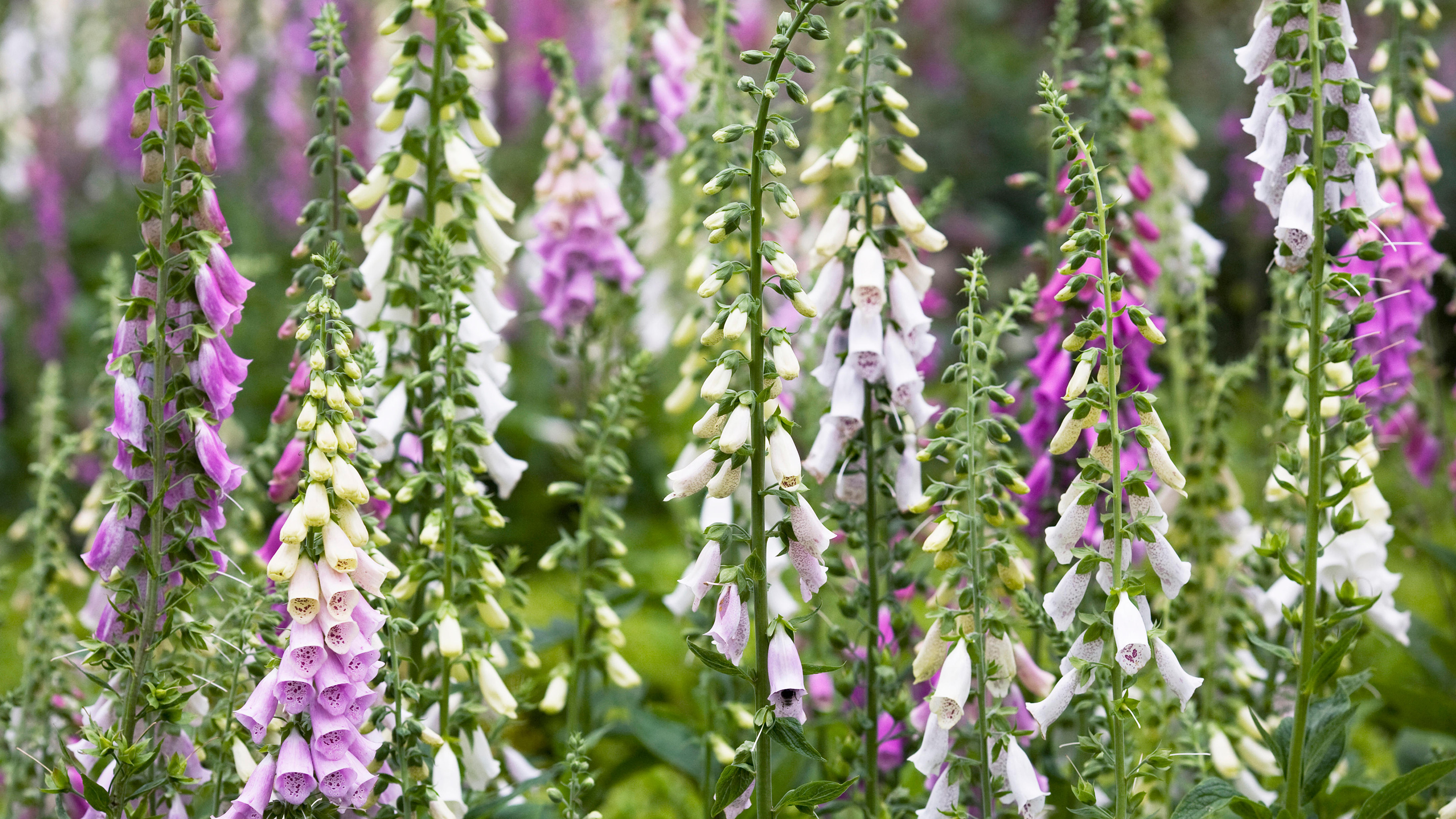

Choosing deer-resistant plants for your yard could be a smart move if you're plagued by these pests eating your plants. After all, deer are America’s number one plant pest. From suburban yards to gated communities to large estates, one deer will eat from seven to twelve pounds of trees, bushes, perennials and annuals – not to mention fruit and vegetables – every day. Your hostas and daylilies do not stand a chance – and your hostas and daylilies are their favorites.
Deer avoid plants that are poisonous, they avoid leaves with a strong smell, they dislike plants with woolly foliage and they avoid plants with thorns and prickles or with slivers of wood in their stems. They will, however, eat the fresh and soft young growth of roses before the thorns harden and become sharp.
Deer prefer bland, tasteless foliage and the stronger it grows and the softer it is the more they like it. But it is worth remembering that, in different parts of the country, deer may have different favorites. They may also avoid a plant in some areas and eat it in another part of the country.
Ask at local nurseries and at your local Cooperative Extension Service for local advice. That way you can make the most of their expertise, developed through talking to local gardeners over many years. Also, many nursery websites now have a good search facility, make the most of it to select deer-resistant plants for your zone.
But it is important to remember that no plant you include in your flower bed ideas or garden borders is 100% deer proof. In winter, in particular, when food is scarce, deer will eat almost anything rather than starve. Blue spruce has the most ferocious sharp needles but deer will eat it if there is nothing else.
Add these deer-resistant plants to your yard
The best way to deter deer from destroying your flowers and foliage is by choosing plants they will not eat. Our list of the top deer-resistant plants is a great place to start when selecting the right varieties for your planting scheme.
1. Angel’s trumpet (Brugmansia)
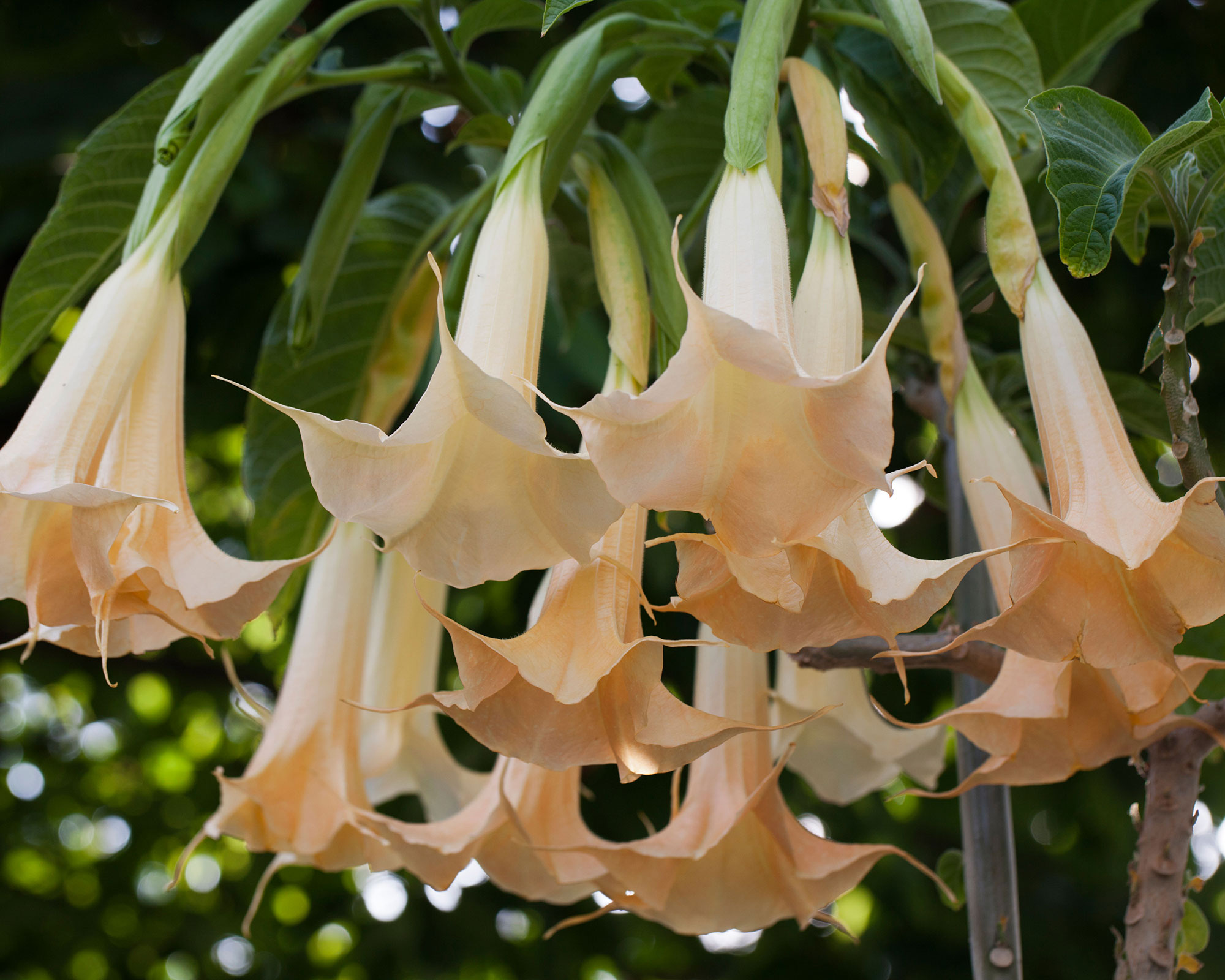
- Type: Summer-flowering temp-perennial
- Deer resistance: Poisonous to deer, very rarely eaten
- Hardiness: USDA 9-10 (UK H1c)
- Height: 6-15ft (1.8-4.5m)
- Spread: 3-12ft (90cm-3.5m)
Angel’s trumpet makes a large, flamboyant, frost-tender bush or small tree with huge fragrant pendulous summer trumpets that sway from the branches in white, cream, yellow, peachy tones, gold, orange or pink.
This is a temp-perennial, grown outside in summer in cooler zones, 5-8, and taken into protection with a temperature of at least 45˚F (7˚C) for the winter. In zones 9 and 10 it can be left outside in winter.
Angel’s trumpet makes a superb specimen for your decking ideas. It enjoys fertile soil and good drainage, and appreciates plenty of moisture and regular fertilizing.
2. Autumn crocus (Colchicum)
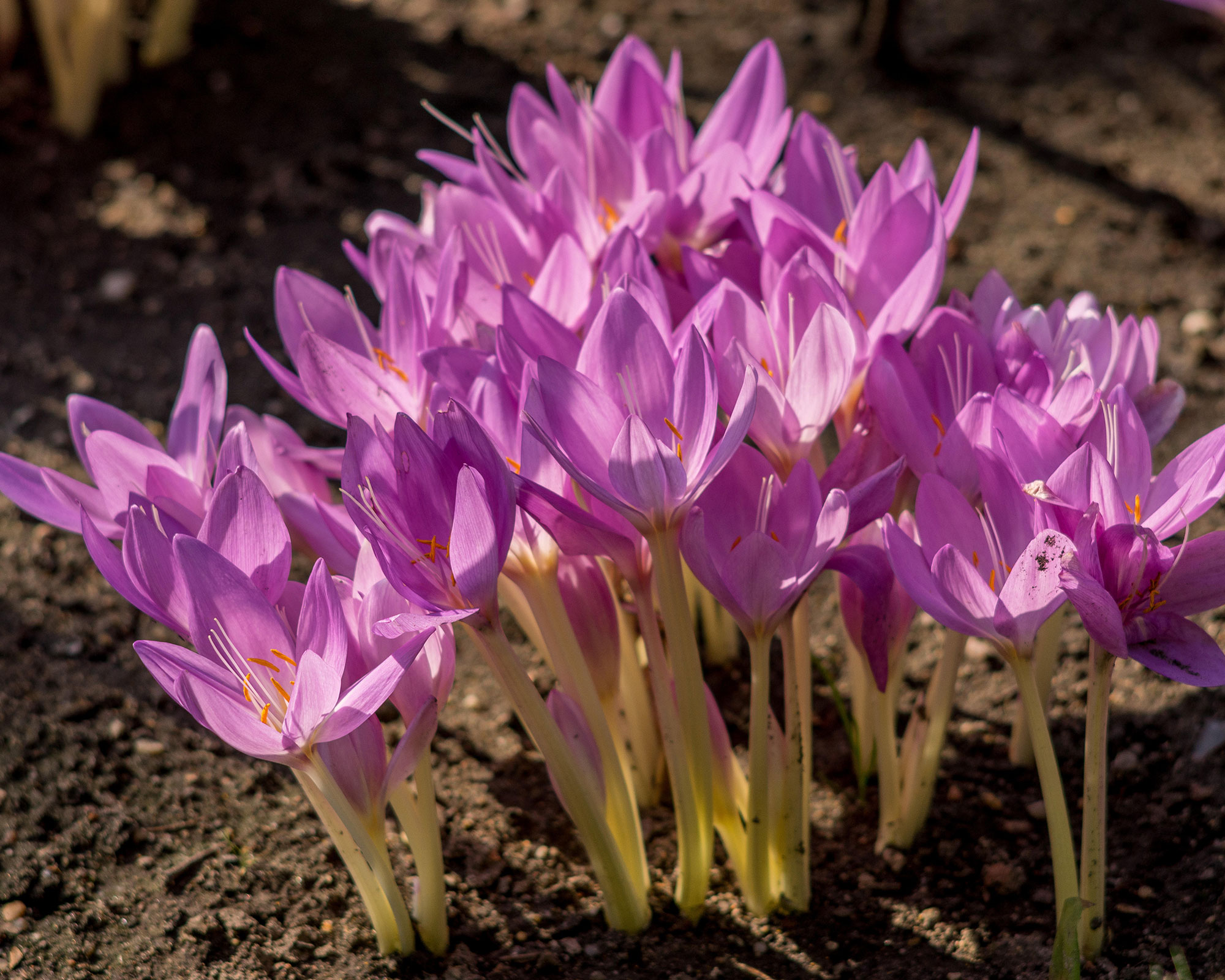
- Type: Fall-flowering bulb
- Deer resistance: Poisonous to deer, very rarely eaten
- Hardiness: USDA 3-9 (UK H5)
- Height: 6-12in (15-30cm)
- Spread: Bulbs multiply steadily when established
Autumn crocuses look like spring crocuses, but the two are not related. They produce large, purple, mauve or white, crocus-like flowers in the fall, often tightly packed together, from a large fleshy bulb. The leaves emerge after flowering and can stretch to 18in (45cm) in length then die away in summer.
Best in sunny or partly shaded flower gardens, autumn crocus also do well in rough grass but delay mowing until the leaves have died back. Plant in late summer, 4-6in deep in rich soil that dries out a little in the summer.
3. Foxglove (Digitalis purpurea)
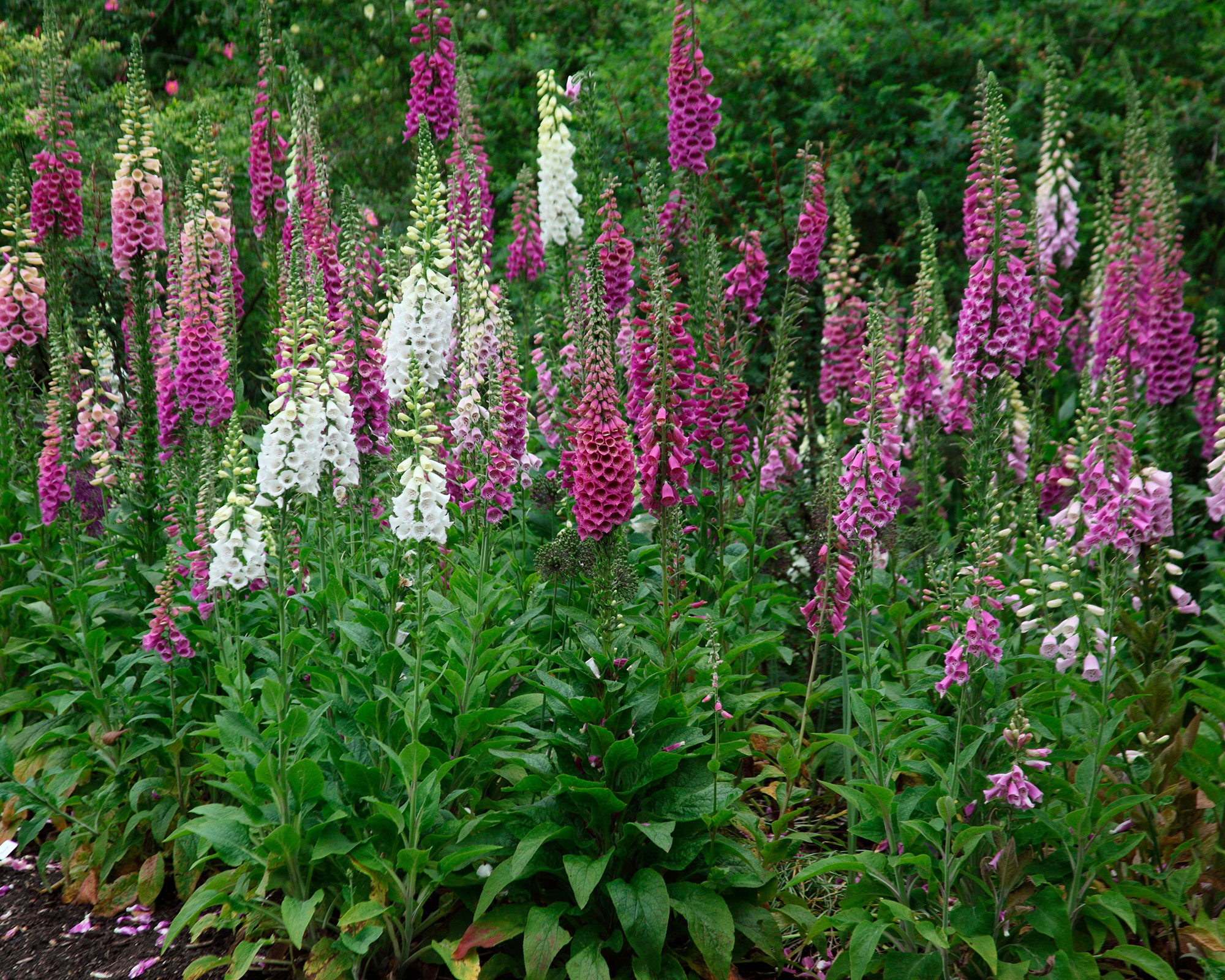
- Type: Biennial or short-lived perennial flower for late summer
- Deer resistance: Poisonous to deer, very rarely eaten
- Hardiness: USDA 4-8 (UK H5)
- Height: 3-5ft (90cm-1.5m)
- Spread: Makes a narrow upright plant but spreads by shedding its seeds
A favorite for cottage garden ideas, these are tall and elegant shade-lovers to plant one year for flowering the next. From a rosette of foliage vertical stems spring up, lined on one side with two-lipped flared summer flowers and often spotted or blotched inside. Modern varieties have flowers all round the stems.
Ranging in color from purple through pink, yellow and cream shades to white, foxgloves are ideal shade loving plants. Best in rich, moist conditions and light shade, foxgloves also do surprisingly well in dry shade.
4. Hellebore, Lenten rose (Helleborus x hybridus)
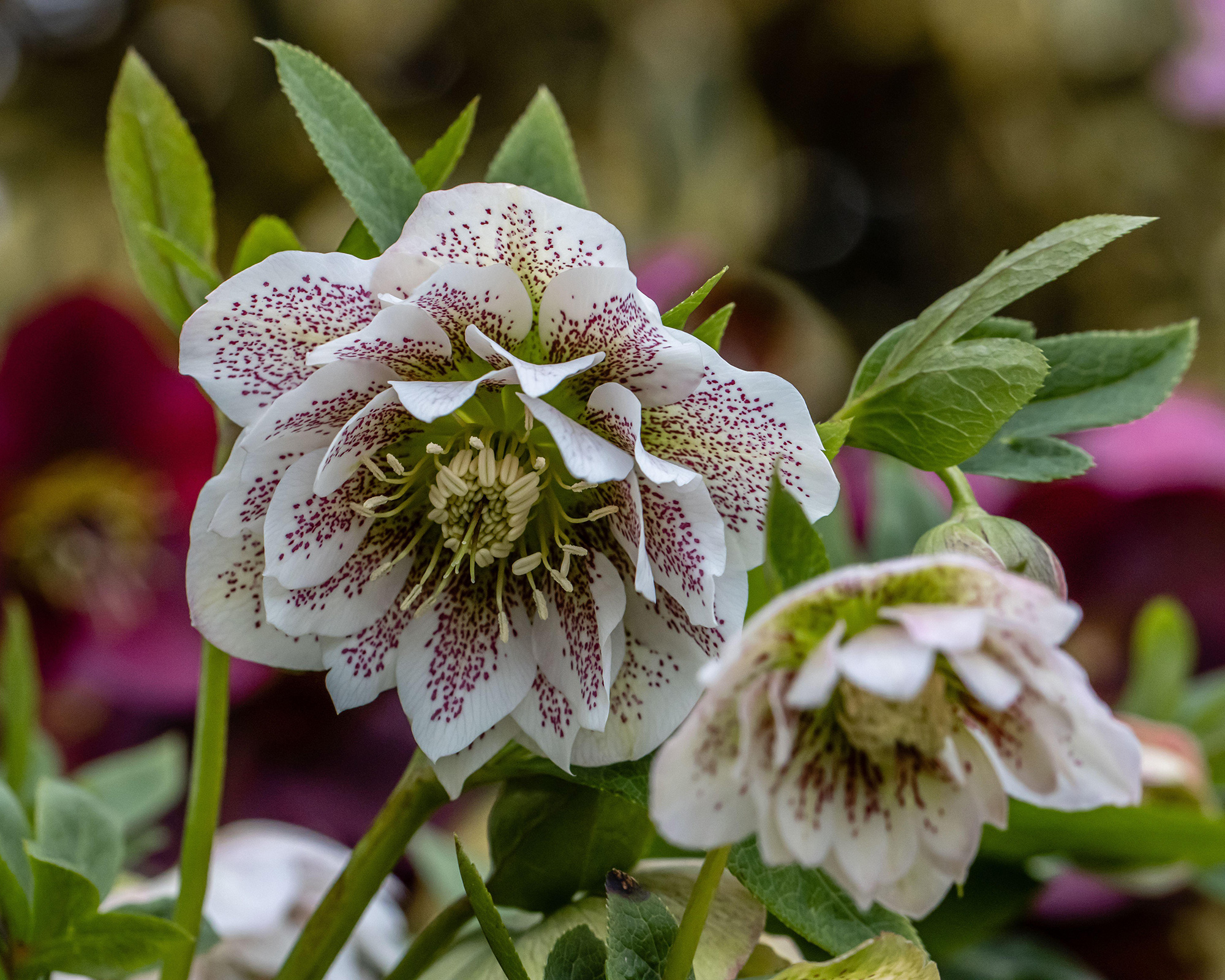
- Type: Winter or spring blooming perennial
- Deer resistance: Poisonous to deer, very rarely eaten
- Hardiness: USDA 5-8 (UK H7)
- Height: 18in (45cm)
- Spread: Crown spreads slowly but steadily to make impressive clumps
Hellebores are tough, evergreen perennials with bold, leathery foliage springing from a tight crown. In late winter or spring, vertical stems carry large, long-lasting saucer shaped, flowers in a wide range of rich or pastel colors. Choose named varieties or types of hellebores whose flower color you specially like.
Good for shady sites between or under deciduous trees and shrubs, hellebores will take sun in the north and in moist conditions. Plant in rich soil in fall or spring and interplant with spring bulbs.
5. Maiden grass, silver grass (Miscanthus)
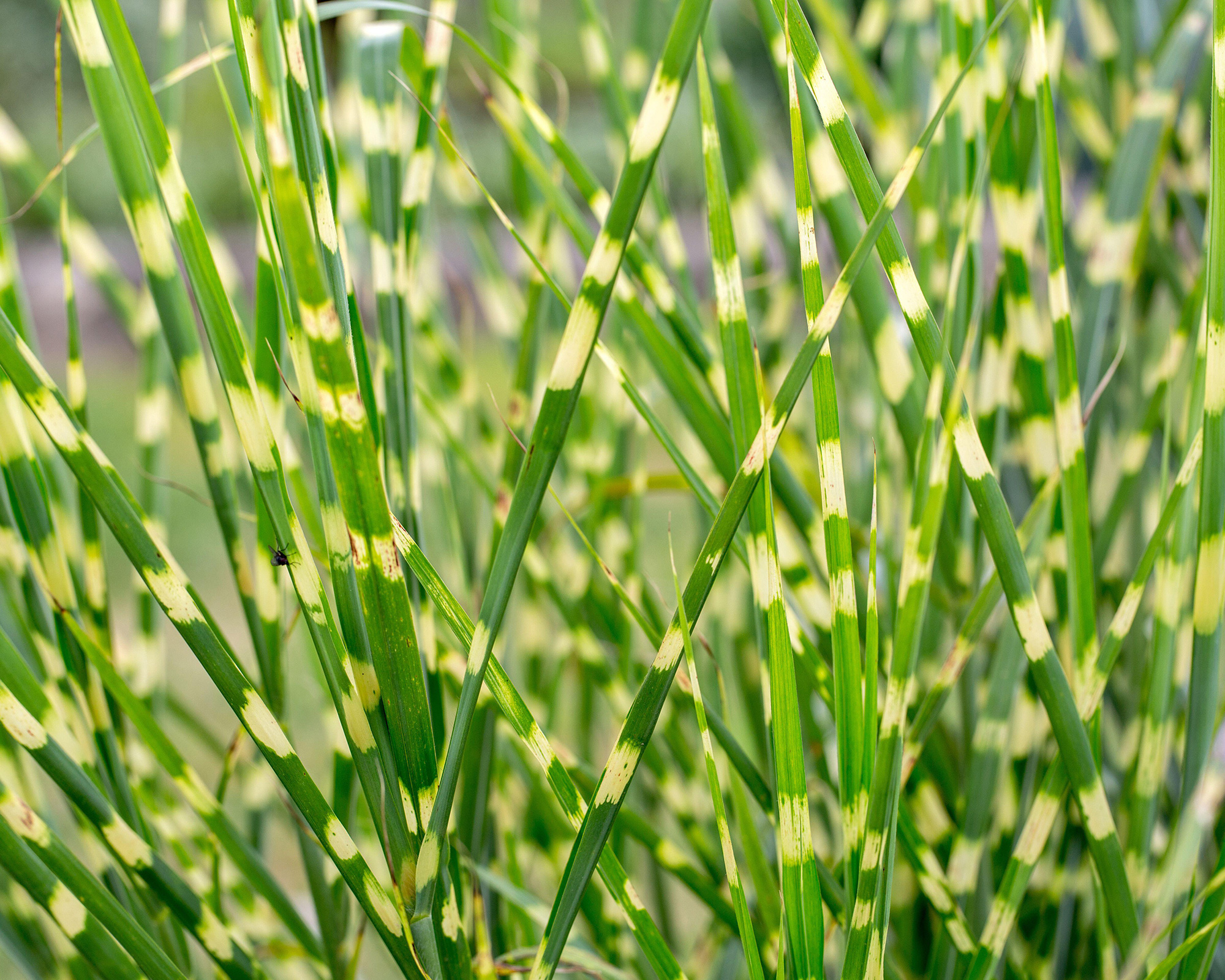
- Type: Perennial grass for foliage and for summer and fall flowers
- Deer resistance: Sharply saw-toothed foliage is inedible
- Hardiness: USDA 5-8 (UK H6)
- Height: 2-10ft (60cm-3m)
- Spread: Clumps expand steadily, except in dry conditions
Many attractive ornamental grasses are deer resistant, but maiden grass is one of the most effective as deer will not eat the sharp-edged leaves. Steadily spreading clumps support narrow foliage, that usually arches elegantly, and slender upright stems topped in late summer and fall with silvery or reddish plumes.
Some varieties are too vigorous, varieties with prettily marked foliage and remaining neat and well-behaved are increasingly seen.
Happy in full sun, or a little shade, maiden grass is adaptable, tolerating dry and wet conditions, but thrives best in rich fertile soil.
Discover more types of ornamental grass in our dedicated guide.
6. Bee balm (Monarda)
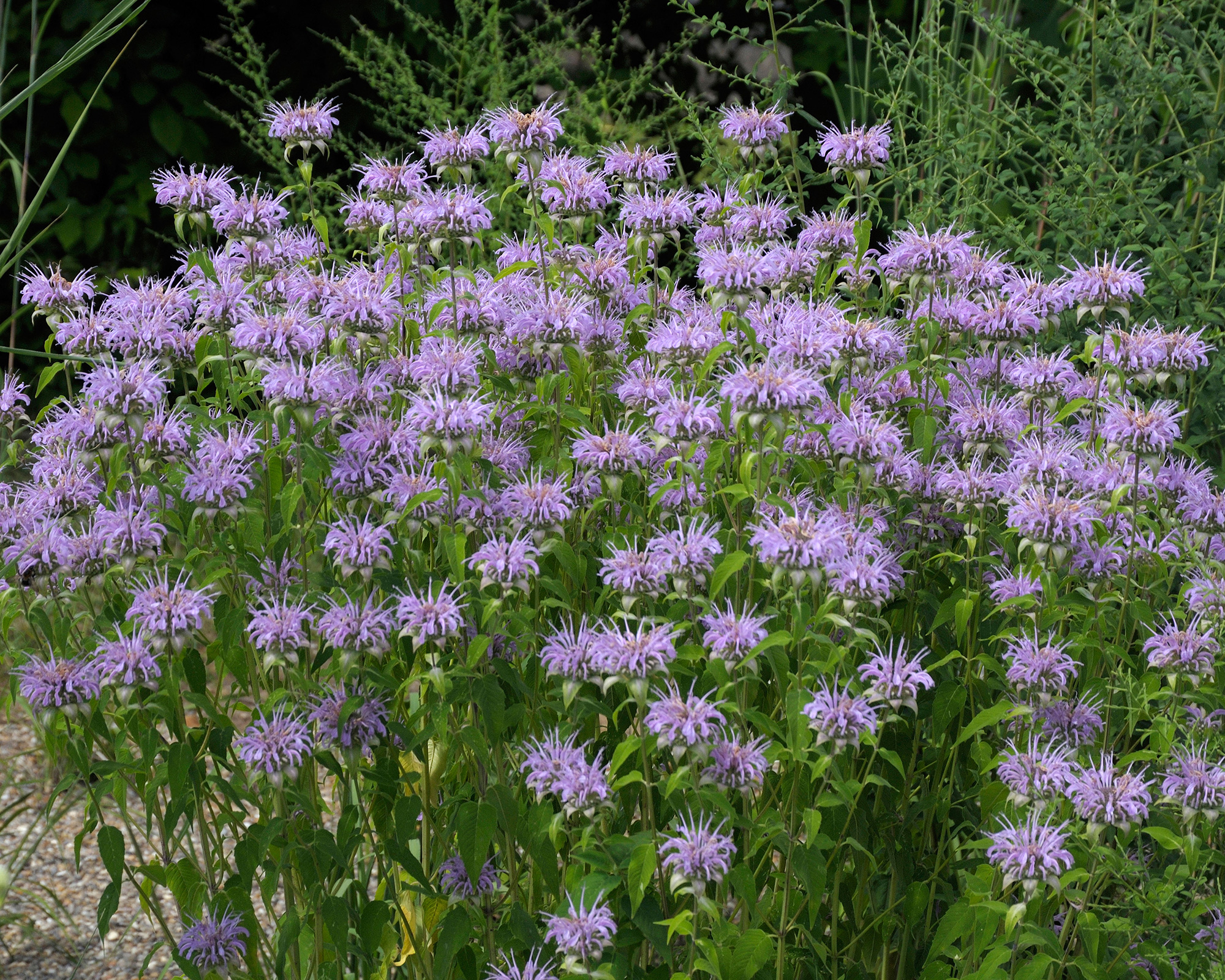
- Type: Native perennial flower for summer
- Deer resistance: Deer hate the strongly aromatic leaves
- Hardiness: USDA 4-10 (UK H4)
- Height: 2-4ft (60cm-1.2m)
- Spread: The roots can spread rapidly, especially when neighboring plants are eaten by deer
Bee balms are North American perennial flowers native to almost all of the United States and Canada. Plants produce square, vertical stems clothed with strongly aromatic, often citrus-scented, foliage and topped with tiers of hooked flowers in scarlet, lavender, white and other shades.
The plants also develop spreading stems that run just below the surface of the soil and, when happy, can spread rapidly in your garden borders.
Bee balm enjoys full sun, or light shade, and has a definite preference for soil that is not parched.
7. Daffodil (Narcissus)
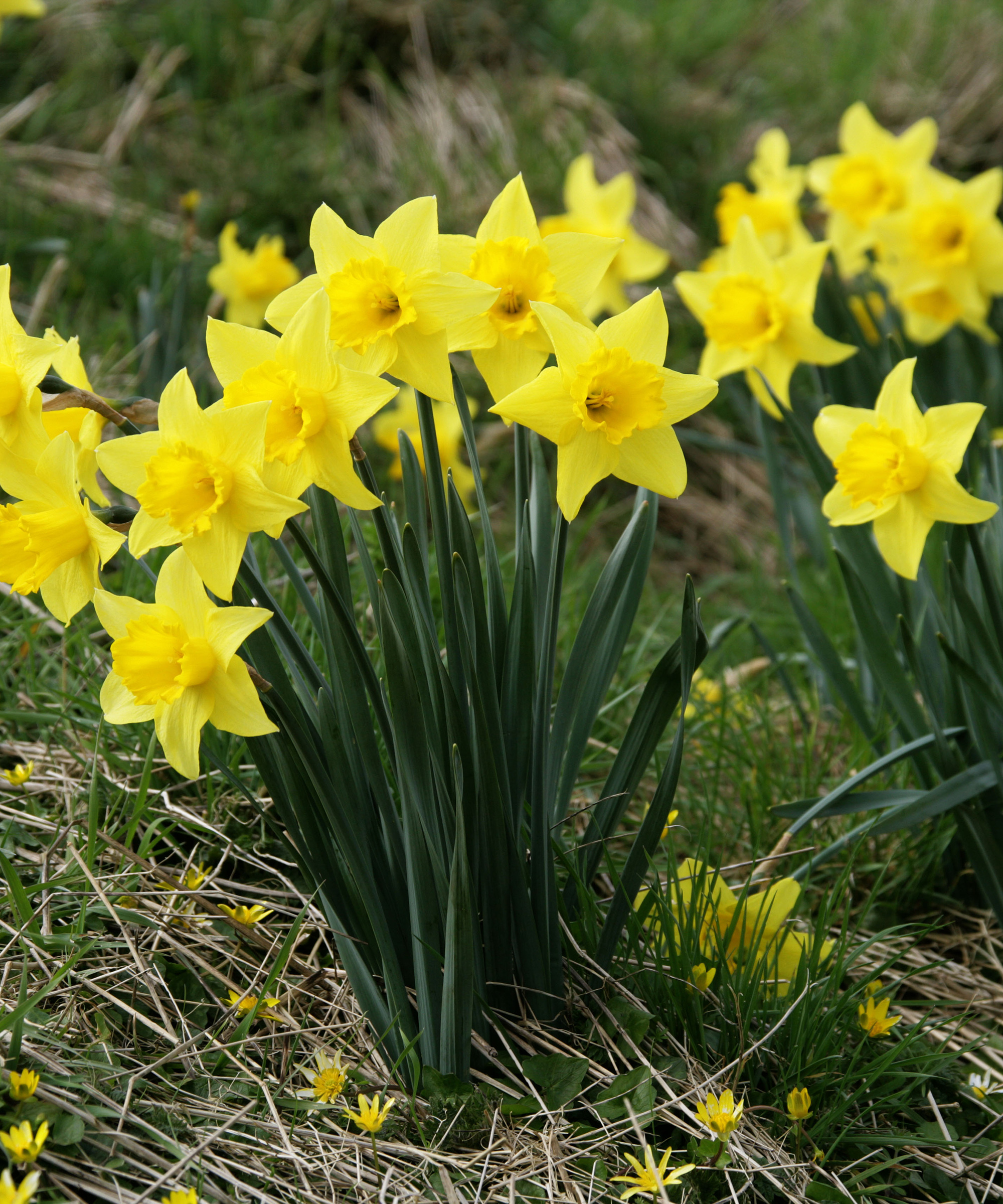
- Type: Spring flowering bulb
- Deer resistance: Foliage, stems and flowers are highly distasteful to deer, and also poisonous
- Hardiness: USDA 4-8 (UK H6)
- Height: 6-18in (15-45cm)
- Spread: Bulbs multiply steadily into slowly expanding clumps
Familiar clump-forming spring flowering bulbs, with a range of more or less trumpet-shaped flowers that have an extra row of petals behind. Each stem carries anything from one to eight flowers, mostly in shades of yellow plus white, cream, orange or almost pink shades and in pretty combinations.
Ideal in shade gardens, or grown naturally in rough grass, daffodils are also valuable additions to your container gardening ideas.
Fo best results with how and when to plant daffodil bulbs, always plant in clumps, or scatter the bubs informally – never plant in rows. Allow the foliage to die down naturally before tidying away or mowing.
8. Bamboo (Phyllostachys)
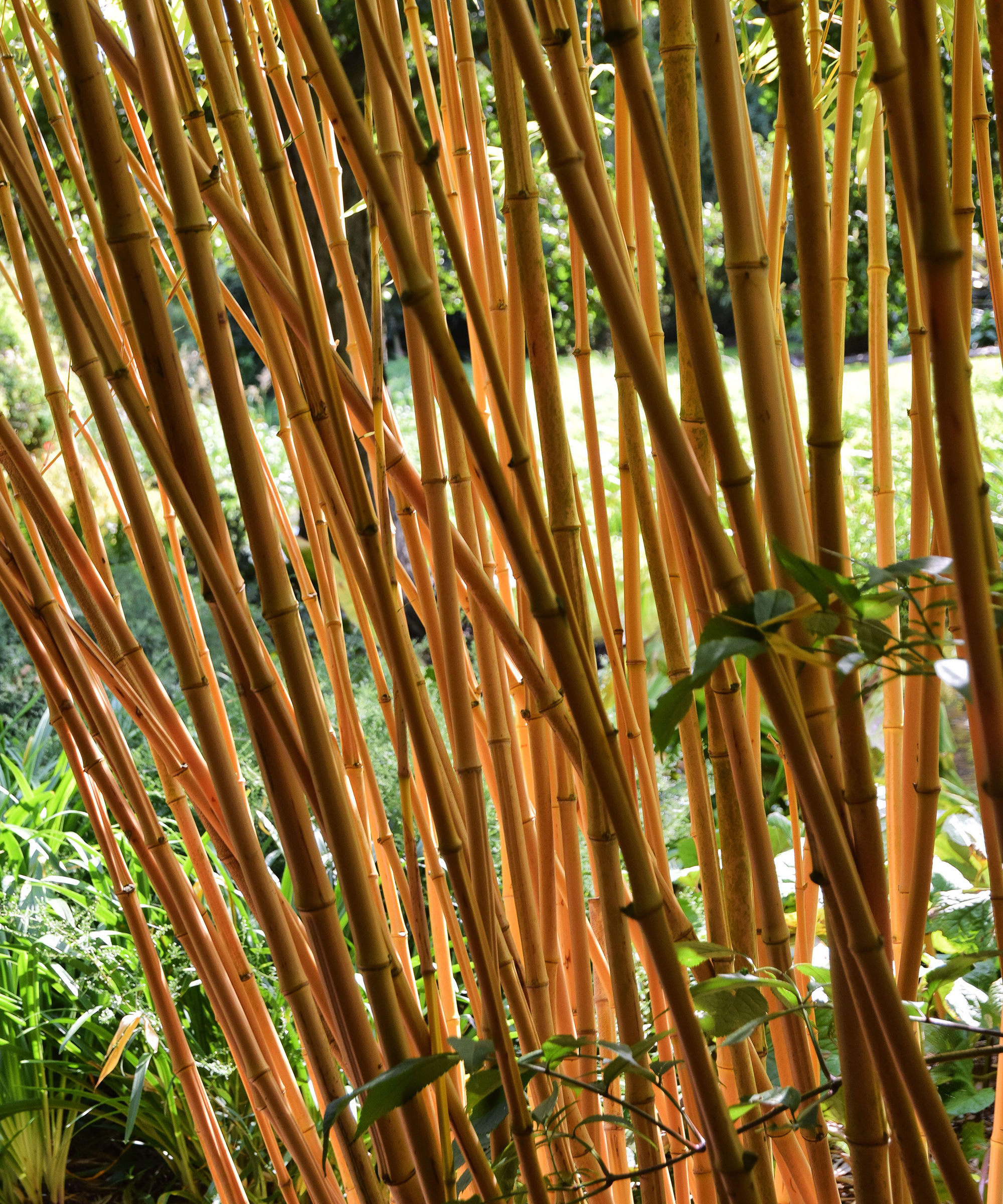
- Type: A woody grass for foliage effect
- Deer resistance: Deer hate the taste and texture of the stems
- Hardiness: USDA 7-10 (UK H5)
- Height: 6-9ft (2-3m)
- Spread: Clump forming, 3-4ft (90-1.2m)
If you're keen to learn how to grow bamboo, the good news is that all bamboos are considered deer-resistant plants, but clump-forming types such as black bamboo (Phyllostachys nigra) and golden bamboo (Phyllostachys aurea) are the most suitable. Many others spread too quickly and can be a nuisance.
Grown for the color of their mature stems and the elegance of their growth, these bamboos make attractive specimens in any good soil and full sun. They dislike drought but are not happy in permanently wet conditions. These bamboos are impressive in large garden planters for the deck, and you can choose the stem coloring to suit its surroundings.
9. Andromeda bush (Pieris)
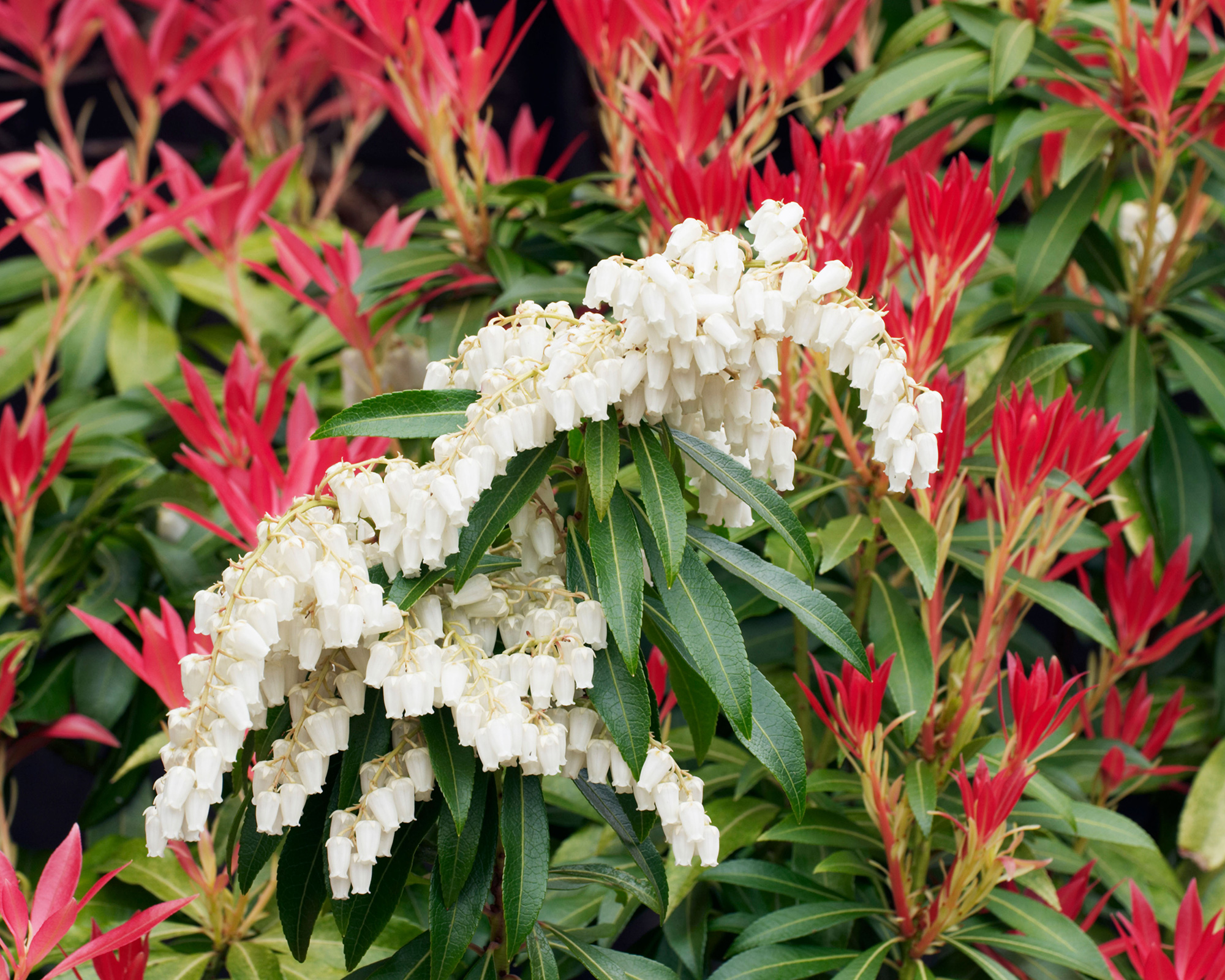
- Type: Evergreen spring flowering shrub
- Deer resistance: They hate the smell of the leaves
- Hardiness: USDA 5-8 (UK H5)
- Height: 3-8ft (90cm-2.4m)
- Spread: Develops into a rounded bush, about half as wide as high
All kinds of andromeda bush are evergreens with dense growth and strings of white, lily-of-the-valley-like flowers in spring. Native Pieris floribunda is a tough, slow-growing, dark-leaved, plant that I have never ever seen eaten by deer.
Asian andromeda bush has brighter foliage, longer branched strings of larger flowers and, usually, red or coppery young spring shoots. The flowers are sometimes pink or almost red.
All prefer acid conditions, dislike drought and the coppery young growth is sometimes damaged when early morning sun strikes frosted growth so a little shade is helpful.
10. Rosemary (Rosmarinus)
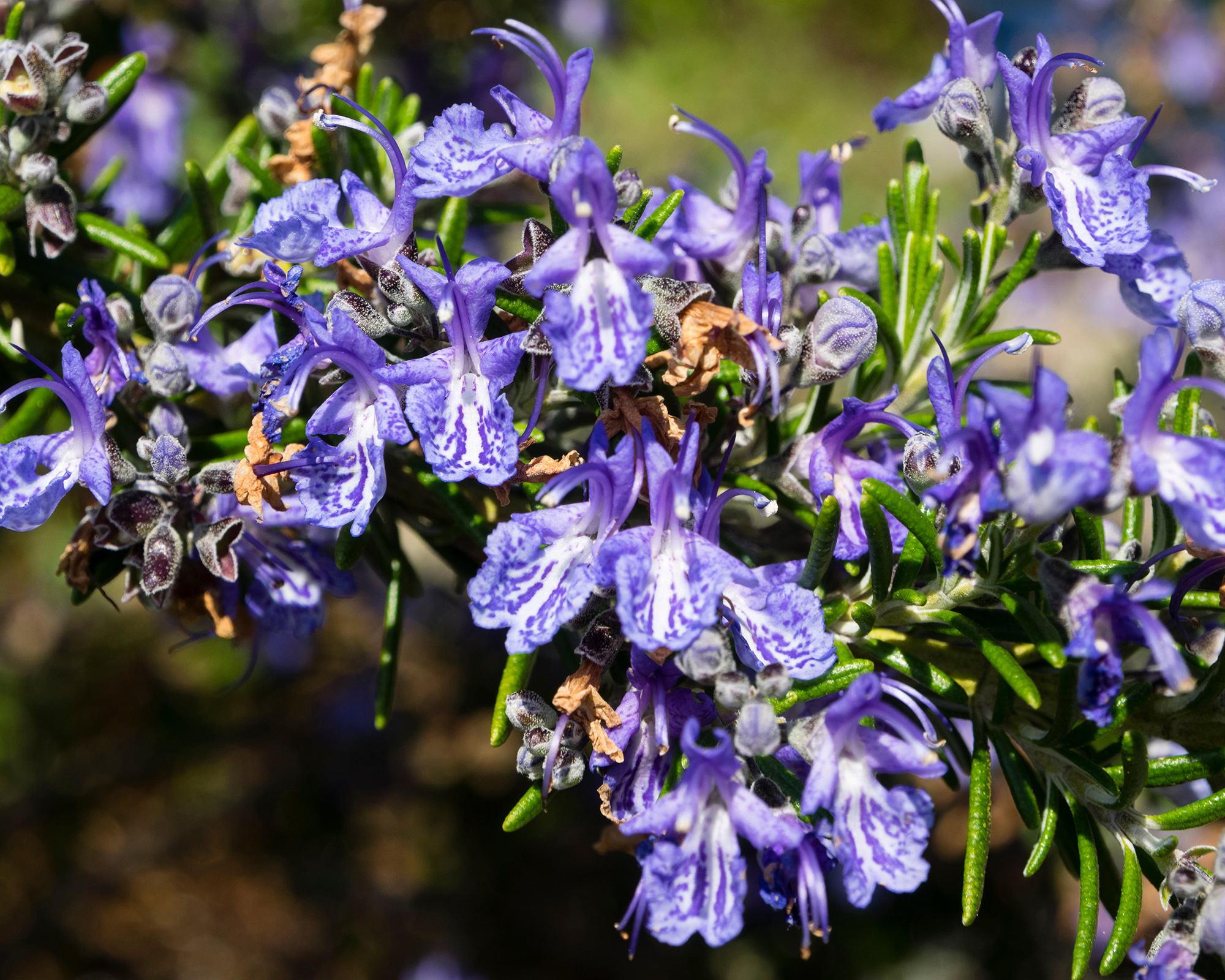
- Type: Kitchen herb, evergreen spring flowering shrub
- Deer resistance: Deer hate the strong smell and taste of the leaves
- Hardiness: USDA 8-9 (UK H4)
- Height: 1-4ft (30cm-1.2m)
- Spread: Varies from trailers and horizontal spreaders to rounded bushes to very upright growth
Rosemary is an essential culinary herb and an invaluable addition to your herb garden ideas. It's also an attractive, evergreen sun-loving shrub for drought gardens and planters. It also makes a good low, informal hedge.
The slender, dark green or greyish green, pointed leaves are silvered on the undersides and attractive all year. In spring the branches are lined with clusters of sparkling blue hooded flowers.
Rosemary hates soggy conditions or strong winds and appreciates regular pruning after flowering to maintain its attractive shape.
Which are the best deer-resistant plants for shade?
There many fine shade-loving plants that the deer very rarely even nibble, most of them are winter or spring flowering. Choose from those that are almost guaranteed deer resistant, have colorful flowers or foliage, and are easy to grow.
Hellebores, now in a wide variety of colors, must be top of the list as well as daffodils – simply choose the varieties with the colors you prefer. For an evergreen shrub that makes a more substantial plant consider Oregon grape (Mahonia aquifolium).
Andromeda bush (Pieris) is a flowering evergreen that excels later in spring as do foxgloves (Digitalis) and the impressive ground cover plant barrenwort (Epimedium), with its patterned leaves and dainty spidery flowers.
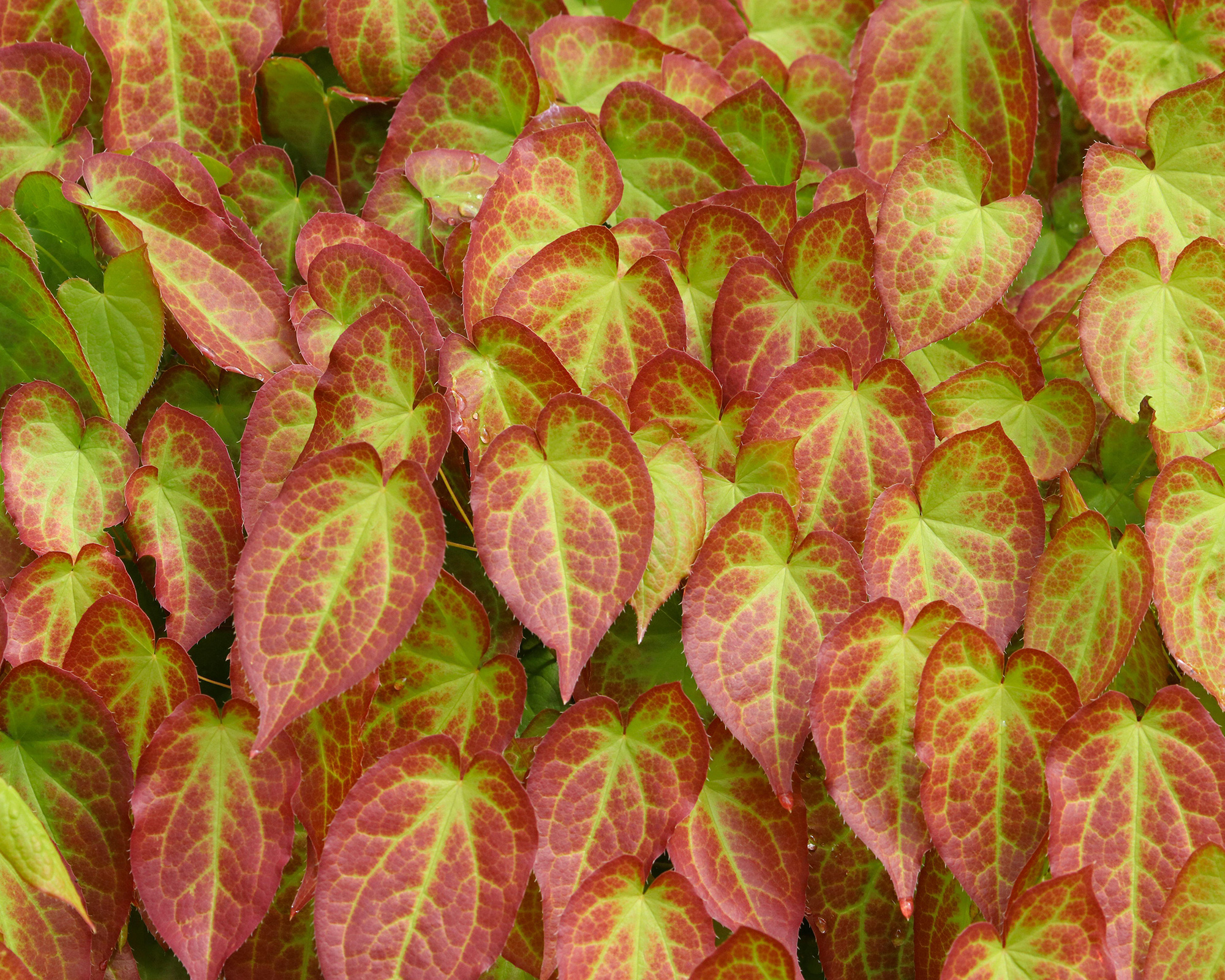
The patterned leaves of barrenwort (Epimedium)
Which native plants are deer resistant?
For native backyard trees consider dogwood (Cornus florida), with its large white flowers or, for wetter situations, black gum (Nyssa sylvatica) with its fiery fall leaf color. From the deer resistant native shrubs available think about Winterberry (Ilex verticillata), with its bright red berries, and andromeda bush (Pieris) with its pretty white flowers.
For perennials and ground cover, shade-loving hay-scented fern (Dennstaedtia punctilobula) stands out but is a vigorous colonizer, wild geranium (Geranium maculatum) is much better behaved.
For sunnier sites the prickly-pear cactus is a favorite, and unexpectedly frost hardy, while tickseeds (Coreopsis) are anther sun-loving option.
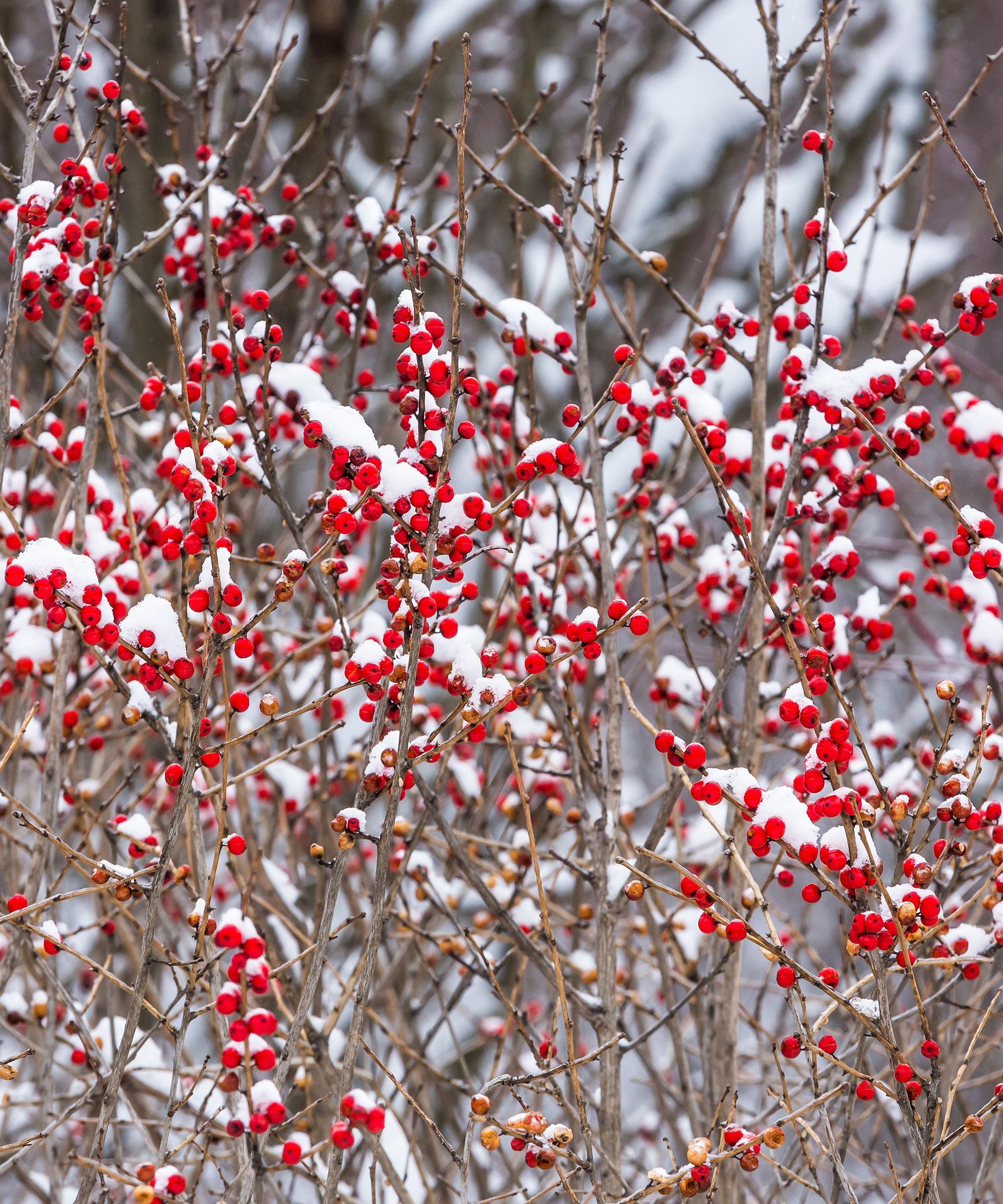
Winterberry (Ilex verticillata)
Which deer resistant herbs can I grow for my kitchen?
Deer hate plants with strongly aromatic leaves and rarely eat them so culinary herbs – which we grow because of their strong flavors – are top choices if deer are a problem in your yard.
Rosemary, sage, and thyme all appreciate sun and good drainage and are some of the best herbs to grow in your garden.
Chives, garlic and garlic chives prefer richer conditions, as does fennel, parsley and the many mints with a variety of flavors. Basil enjoys hot summers and no shortage of water.
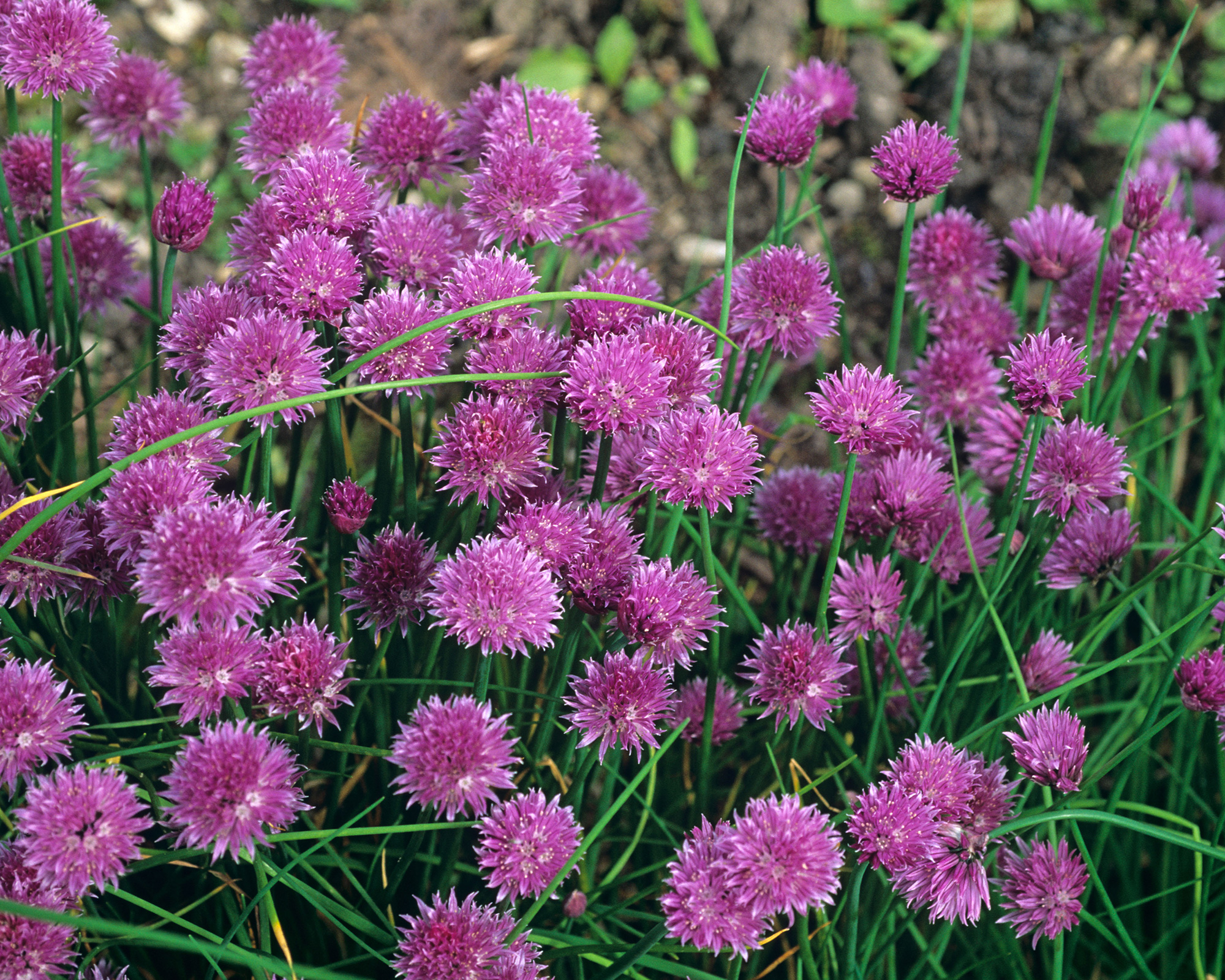
Deer will avoid chives because of the strong flavor
Which deer-resistant summer flowers can I grow in a planter on my deck?
If you're looking for deer-resistant plants for your deck or patio gardening ideas, first consider caladiums – though grown for their leaves and not flowers – with stunning patterns in green, pink, red, white, and silver on their large arrowhead leaves.
Cannas make bold deck specimens, with their colorful flowers, and there are also some dramatic varieties with large colored or striped leaves. The many kinds of bushy salvias (ornamental sage) give you plenty of options and white flowering tobacco has an intoxicating evening fragrance.
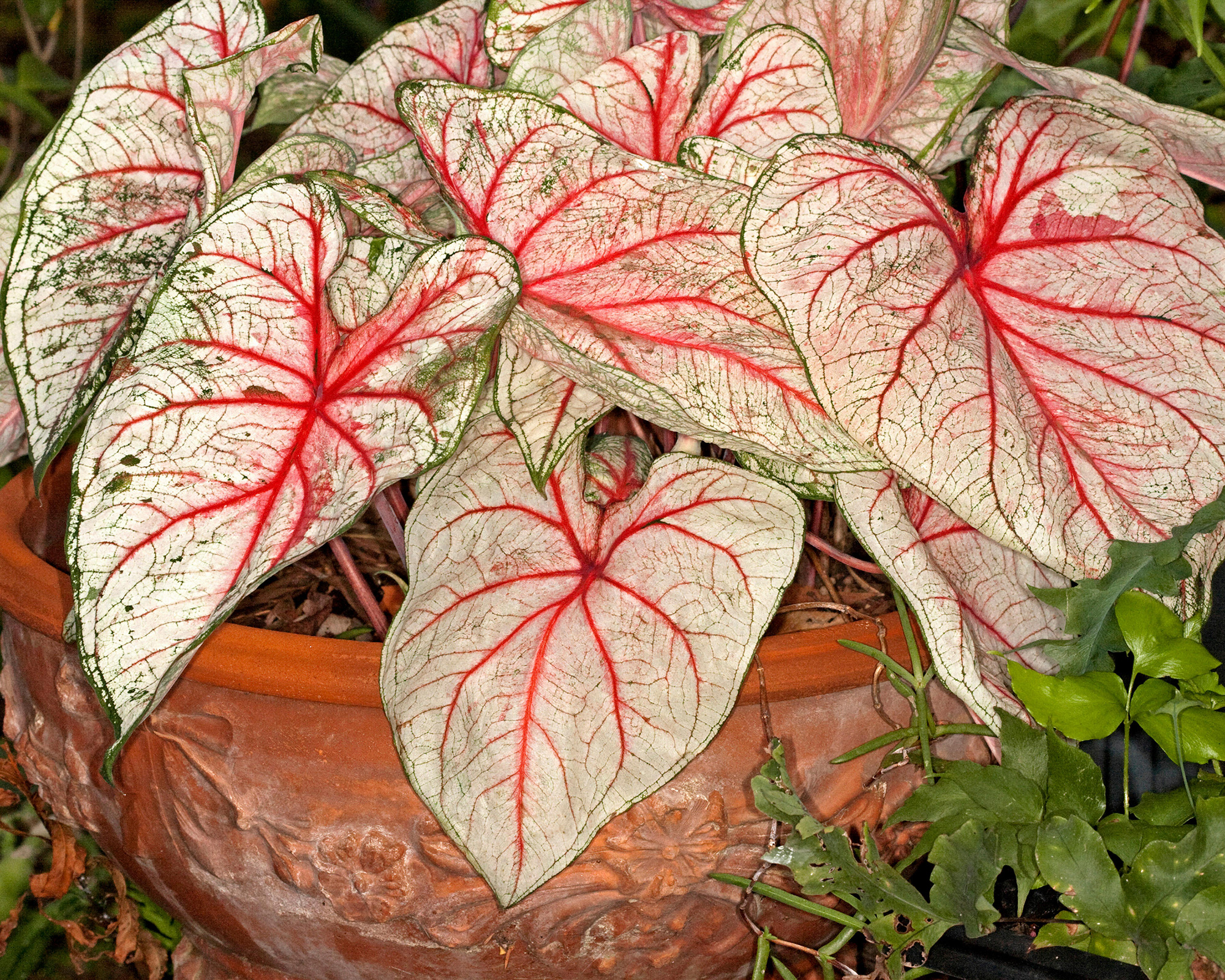

Graham Rice is a garden writer who has won awards for his work online, and in books and magazines, on both sides of the Atlantic. He is a member of a number of Royal Horticultural Society committees and the recipient of the 2021 Garden Media Guild Lifetime Achievement Award.
